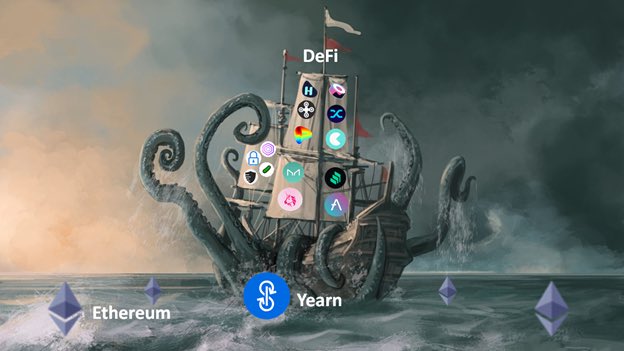
On the surface index protocols appear to just be vehicles for passive exposure to cryptoassets.
However under the hood they're much more powerful than that.
Through meta-governance index protocols may be an attractive DeFi aggregation play through voting power accumulation.
1/
However under the hood they're much more powerful than that.
Through meta-governance index protocols may be an attractive DeFi aggregation play through voting power accumulation.
1/

It all starts with the premise that index protocols are fundamentally community governed pools of assets that can be used to provide investors:
1. Passive asset exposure
2. Yield from vault strategies
3. Governance delegation through meta-governance
1. Passive asset exposure
2. Yield from vault strategies
3. Governance delegation through meta-governance
https://twitter.com/masonnystrom/status/1341062143660052481?s=20
Index protocols are the latest attempt at DeFi aggregation - a topic we’ve explored multiple times.
The reason why is simple - Web2 aggregators have accrued trillions of $$$ in value by occupying powerful positions in value chains throughout the economy.
messari.io/article/value-…
The reason why is simple - Web2 aggregators have accrued trillions of $$$ in value by occupying powerful positions in value chains throughout the economy.
messari.io/article/value-…
Index protocols attempt to aggregate by accumulating users’ assets in indices which index protocols can then use to influence protocol governance.
The question of course is will they capture value from meta-governance?
The question of course is will they capture value from meta-governance?

What value capture levers can index protocols realistically pull using their meta-governance power?
Is governance valuable in and of itself?
What about the power of governance tokens in the long-run if protocols ossify? (a philosophical question).
Is governance valuable in and of itself?
What about the power of governance tokens in the long-run if protocols ossify? (a philosophical question).
@masonnystrom and I explore this question and more in our latest piece on index protocols and meta-governance featuring deep dives on Index Cooperative, PowerPool, and PieDAO.
messari.io/article/index-…
messari.io/article/index-…
• • •
Missing some Tweet in this thread? You can try to
force a refresh





